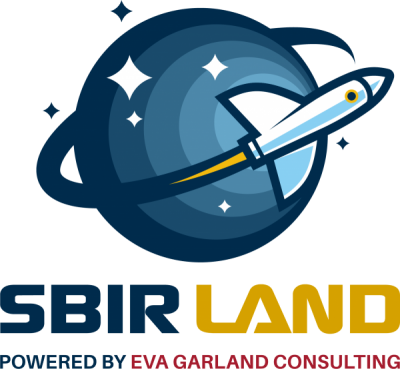SBIR Land Home › Forums › Institute & Agency Questions › National Science Foundation (NSF)
Tagged: NSF
- This topic has 56 replies, 24 voices, and was last updated 1 year, 9 months ago by
Leisa@EGC.
-
AuthorPosts
-
at 11:20 pm #5675
Anonymous
InactiveHi, what is the quickest, most economic way to obtain IRB certification for an SBIR project?
at 7:34 pm #5684lindsay@EGC
ParticipantHi nebr384! If you are working with an academic collaborator on your proposal, it is usually more economical to obtain IRB review/approval via that institution (though it is not always a speedy process). If you do not have an academic partner or are not able to make use of their IRB, you can seek out a commercial Institutional Review Board to review your protocol. A quick web search for “commercial IRBs” will help you find lists of companies that offer these services. You’ll see that many universities have recommended commercial IRBs listed on their websites, which can help you identify reputable service providers.
at 11:26 am #5769Anonymous
InactiveHi. I want to know how long does it take to get an answer from NSF for a postdoctoral research proposal after the submission?
at 11:39 pm #5790Boston1234
ParticipantWhat is your advice on submitting multiple applications to the NSF? I know you have to wait until your first proposal has been reviewed… does that mean until you have been awarded or rejected for your first proposal? Like when you receive funds? Then, when it comes to the second, if you are a small company around 3 or so people, will they even consider granting you an award for a second project while your first project is in Phase 1? or even in Phase 2? Should you consider applying in a different category (to a different PM)? Thank you
at 5:15 pm #5806Lu@EGC
ModeratorHi! Please check the program solicitation regarding the anticipated award date. It is usually listed in the announcement. Based on information from NSF’s website:
NSF strives to be able to tell applicants whether their proposals have been declined or recommended for funding within six months. Large or particularly complex proposals or proposals from new awardees may require additional review and processing time. The time interval begins on the deadline or target date, or receipt date, whichever is later. The interval ends when the Division Director acts upon the Program Officer’s recommendation.
Hope this helps!at 5:21 pm #5807Lu@EGC
ModeratorHi! Per NSF guidelines: An organization may submit only one invited SBIR/STTR Phase I proposal submission windw. An organization must wait for a determination from NSF (e.g., Award, Declination, or Return without Review) on any NSF SBIR/STTR Phase I pending proposal before submitting a new proposal in the next window. This eligibility constraint will be strictly enforced. In the event that an organization exceeds this limit, the first proposal received will be accepted, and the remainder will be Returned without Review. Declined proposals require a new invited Pitch while proposals Returned without Review may be submitted using the same invited Pitch (within the one-year eligibility from date of the original proposal invitation).
Thus, if the first proposal is rejected, you can submit a new pitch. If invited, a new/revised proposal can be submitted. If awarded, with a small company having several employees, even changing to a new topic area, it will be really difficult to receive another award. Hope this helps!at 3:52 pm #5848Shoba
ParticipantDoes NSF provide a list of Allowable & Unallowable INDIRECT Costs? NIH seems to have a well laid out webpage for this, but NSF seems to refer to FAR part 31, which is crazy loo…ong and complicated. Is there a more comprehensible NSF Allowable Indirect Cots list available somewhere?
Thanks.at 2:11 pm #5850Nate@EGC
ParticipantHi Shoba! NSF states that “Indirect costs are those costs which are not readily identifiable with a particular cost objective (e.g., direct organizational activity or project), but nevertheless are necessary for the general operation of an organization. Examples of indirect costs include the salary and related expenses of individuals working in accounting, personnel, purchasing functions, rent, depreciation and utilities.” You may find this page helpful: https://www.nsf.gov/bfa/dias/caar/indirect.jsp
NSF has also published a list of unallowable costs as indirect costs in a Frequently Asked Questions page that can be viewed here: https://www.nsf.gov/pubs/2016/nsf16134/nsf16134.jsp#q25
The answer provided states that “Expenses unallowable as indirect costs include: (1) Independent Research and Development (IR&D); (2) patent and patent-related expenses; (3) sales and marketing expenses; (4) manufacturing and production expenses; (5) business development; (6) indirect salaries and wages in excess of 35% of total salaries and wages, less paid time off; (7) entertainment; (8) H1-B Visa Fees; (9) bad debts/fines/penalties; and (10) Federal taxes. In addition, while generally allowable under Federal awards, the Facilities Capital Cost of Money is unallowable under the SBIR/STTR program.”
Hope this helps!
at 6:51 pm #6603spaustia
ParticipantWhat TRL levels is NSF looking for for Phase I versus Phase II? Thanks in advance!
at 7:23 pm #6605Leisa@EGC
ModeratorHello!
The Technology Readiness Level (TRL) scale, which ranges from 1-9, is used to gauge technology status.
Typically, TRLs 1-3 are appropriate for Phase I, while TRLs 4-6 are appropriate for Phase II.
at 12:15 pm #6616spaustia
ParticipantResponding to this post: The Technology Readiness Level (TRL) scale, which ranges from 1-9, is used to gauge technology status.
Typically, TRLs 1-3 are appropriate for Phase I, while TRLs 4-6 are appropriate for Phase II.
—————————Does that mean those are the TRLs that the tech should already be at when applying? Or, those are the TRLs that the tech should achieve during the project?
at 7:03 pm #6628Leisa@EGC
ModeratorThose are the RLS that the tech should achieve during the project.
-
AuthorPosts
- You must be logged in to reply to this topic.
